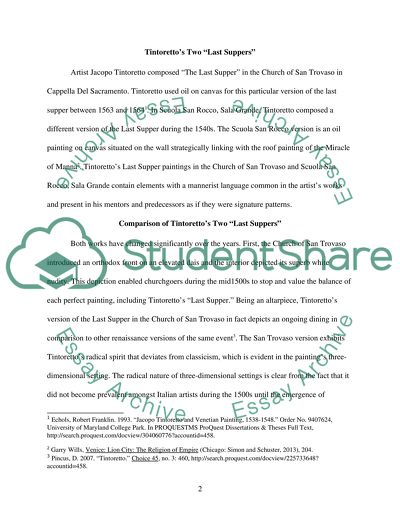Cite this document
(“Compare Tintoretto's two Last Suppers discussing their formal Essay”, n.d.)
Retrieved from https://studentshare.org/visual-arts-film-studies/1656013-compare-tintorettos-two-last-suppers-discussing-their-formal-qualities-materials-and-function-together-with-meaning
Retrieved from https://studentshare.org/visual-arts-film-studies/1656013-compare-tintorettos-two-last-suppers-discussing-their-formal-qualities-materials-and-function-together-with-meaning
(Compare Tintoretto'S Two Last Suppers Discussing Their Formal Essay)
https://studentshare.org/visual-arts-film-studies/1656013-compare-tintorettos-two-last-suppers-discussing-their-formal-qualities-materials-and-function-together-with-meaning.
https://studentshare.org/visual-arts-film-studies/1656013-compare-tintorettos-two-last-suppers-discussing-their-formal-qualities-materials-and-function-together-with-meaning.
“Compare Tintoretto'S Two Last Suppers Discussing Their Formal Essay”, n.d. https://studentshare.org/visual-arts-film-studies/1656013-compare-tintorettos-two-last-suppers-discussing-their-formal-qualities-materials-and-function-together-with-meaning.


